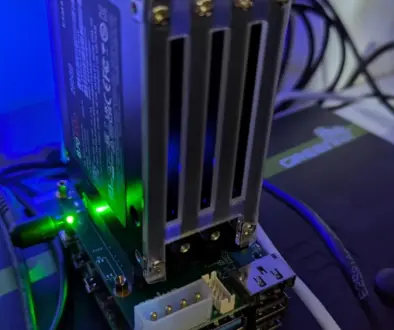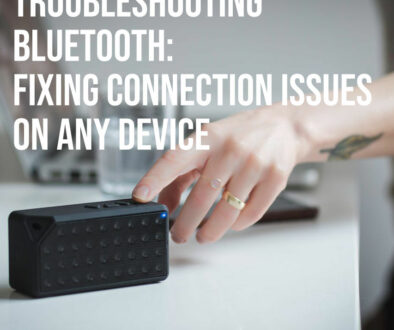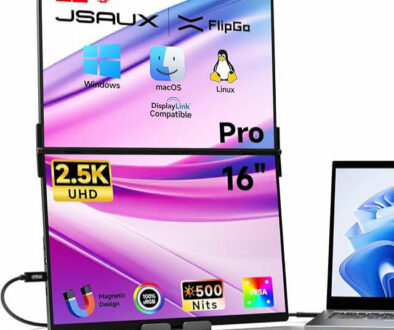Eco-Friendly Tech Upgrades: What to Replace and What to Reuse
As technology continues to evolve at a breakneck pace, so does our consumption of it. Every year, millions of devices are discarded or replaced — not because they’re broken, but because newer models promise better performance, shinier features, or more storage. Here is how you can make the right eco-friendly choice to upgrade, replace or reuse your tech.
Why Sustainability Matters in Tech
But this cycle comes at a cost. Electronic waste — or e-waste — is one of the fastest-growing waste streams in the world. It contains toxic materials that can harm the environment and human health if not disposed of properly. Plus, manufacturing new tech requires mining for rare metals, high energy use, and global shipping — all of which contribute significantly to carbon emissions.
The good news? You don’t have to replace your tech every time a new model drops. In many cases, upgrading your current device or reusing old gadgets is not only possible — it’s often smarter, cheaper, and far more sustainable.
This article will show you how to make eco-conscious decisions when it comes to your tech — helping you reduce waste, save money, and keep your favourite gadgets relevant longer.
Smart, Sustainable Ways to Extend the Life of Your Gadgets in 2025
Why Upgrade Instead of Replace? The Environmental and Financial Case
Before rushing to buy the latest smartphone, laptop, or tablet, consider this: most modern electronics still function perfectly well for years after purchase . Performance slowdowns, battery degradation, and software updates may give the impression that your device is obsolete — but with the right upgrades, you can breathe new life into aging tech.
A. The Lifecycle of Electronics
From production to disposal, every electronic device has an environmental footprint:
- Manufacturing : Mining for raw materials like lithium and cobalt harms ecosystems and communities.
- Transportation : Devices travel thousands of miles before reaching your hands.
- Usage : Energy consumption adds up over years of daily use.
- Disposal : Only a fraction of e-waste is recycled responsibly.
By extending the lifespan of your tech, you help reduce demand for new products — and lower the pressure on natural resources.
B. Cost vs Value
Buying new is expensive. But replacing a worn-out battery, adding more RAM, or upgrading to an SSD can dramatically improve performance — often for just a fraction of the price of a new device.
Upgrading also lets you hold onto a device you already know and trust, rather than learning a new interface, transferring data, and adjusting to different hardware.
C. The Power of Repair and Refurbishment
Thanks to growing awareness around sustainability, repair culture is making a comeback. More brands are offering spare parts, repair guides, and modular designs that let users fix their own gear.
Even if your device isn’t officially supported, there are often third-party solutions available — from replacement batteries to DIY kits that let you upgrade your tech instead of throwing it away.
D. The Right to Repair Movement
Around the world, consumers and lawmakers are pushing for Right to Repair laws that require manufacturers to provide access to tools, manuals, and parts. This empowers users to maintain and extend the life of their electronics — reducing both waste and cost.
E. Carbon Footprint Comparison
Studies show that the majority of a smartphone or laptop’s carbon footprint comes from manufacturing and transport, not from daily use. That means keeping your current device running as long as possible is one of the most effective ways to reduce your personal tech-related emissions.

What You Can (and Should) Upgrade – Even on Older Devices
You don’t always need to buy new to enjoy improved performance. Many common upgrades can be done affordably and even by beginners. Here are some of the most impactful ones:
1. RAM & Storage Upgrades – Boost Performance Without Buying New
If your laptop or desktop feels sluggish, especially when multitasking or editing media, adding more RAM or switching to an SSD can make a huge difference.
- RAM : Most laptops built before 2020 support RAM upgrades. Going from 8GB to 16GB can drastically improve responsiveness, especially for creative work and virtual machines.
- Storage : Swapping out a slow HDD for a fast SSD can speed up boot times, app launches, and file transfers — sometimes more effectively than buying a new machine.
These upgrades are often simple enough for anyone to do at home with a screwdriver and online tutorial.
2. Battery Replacement – Revive Smartphones, Laptops, and Tablets
Battery degradation is one of the biggest reasons people replace smartphones and laptops — but you don’t have to toss the whole device just because the battery won’t last a full day.
- Smartphones : Companies like Apple and Samsung now offer official battery replacements for older models. Third-party services and DIY kits are also widely available.
- Laptops : Whether it’s a MacBook Pro or a Windows notebook, replacing a swollen or weak battery can bring back hours of use.
- Tablets & E-readers : These often suffer from battery issues too — and swapping them out is easier than you might think.
Replacing a battery costs anywhere from $20–$100 — far less than buying a new device, and much kinder to the planet.
3. External Accessories – Transform Old Gear Into Workstations
Don’t underestimate the power of external accessories to refresh your experience without replacing your main device.
- Thunderbolt docks : Turn an older laptop into a desktop workstation with dual monitors, Ethernet, and USB ports.
- External SSDs : Speed up your system and expand storage without opening your laptop. Some machines and operating system even lets you boot up from your external SSD make it quicker and faster over onboard HDD by many folds when it comes to starting up and loading applications and files.
- Wireless peripherals : A fresh keyboard, mouse, or trackpad can make an older computer feel brand new.
- Docking stations : Especially useful for MacBooks or ultrabooks that lack ports.
With the right setup, you can keep using your current laptop or desktop for years — even if it doesn’t have the latest processor.
4. Software Optimisation – Sometimes Less Is More
Sometimes, the problem isn’t your hardware — it’s the software. Bloatware, outdated operating systems, and inefficient apps can drag down performance.
Here’s what you can do:
- Perform a clean OS install to remove clutter
- Switch to a lightweight Linux distro like Ubuntu or Pop!_OS
- Use virtualization tools like Parallels or VirtualBox to run multiple environments on one machine
- Uninstall unused apps and disable startup programs
A software refresh can often be the most eco-friendly and cost-effective upgrade of all.
5. Upgradable Components – Give Your Device a Second Wind
Some devices are designed with upgradability in mind. For example:
- Desktop PCs : Easily upgraded with new GPUs, CPUs, RAM, and storage
- Framework Laptop : Designed specifically for user repairs and customization
- Fairphone : Modular smartphone that lets you swap out nearly every part
Even older Macs and Windows laptops can benefit from small component swaps, such as:
- Upgrading to a faster SSD
- Adding more RAM where possible
- Replacing broken hinges, screens, or keyboards
These changes keep your device functional and efficient — and out of landfills.
6. Firmware & BIOS Updates – Unlock Hidden Potential
Many people overlook firmware and BIOS updates — but these can actually improve stability, security, and compatibility with newer software.
Check your device manufacturer’s website regularly for:
- BIOS/UEFI updates that enable newer processors or features
- Firmware patches that fix bugs or improve battery life
- Driver updates that enhance performance or connectivity
In some cases, a few clicks can unlock significant improvements — no hardware change required.
7. Third-Party Upgrades – Affordable Mods That Make a Difference
From custom keyboards to stylus support and docking stations, third-party upgrades can transform how you interact with your tech.
Examples include:
- Mechanical keyboard mods for laptops
- Stylus-compatible screen replacements for tablets
- Docking arms and monitor stands for better ergonomics
- Portable cooling fans for gaming laptop
These upgrades not only improve usability but also help justify keeping your current device longer.

Tech That Still Has Life – What to Reuse and Repurpose
If you’ve already upgraded your main device, don’t throw away the old one. There’s a surprising amount of life left in many “retired” gadgets — and with a little creativity, you can put them to work again.
1. Old Smartphones – Turn Into Useful Tools
Your old phone can become:
- Dashcam or backup camera for your car (we have a full write up for this one)
- Security camera using apps like Alfred or Manything (steps in 10 Easy DIY Tech Projects for Beginners)
- Media remote for smart TVs or streaming boxes
- Portable music player for workouts or travel
- Digital photo frame with a wall mount and slideshow app
All it takes is a case, a mount, and a bit of imagination. You can find more ideas from Creative Uses for Old Smartphones.
2. Retired Laptops – Convert Into Functional Machines
Old laptops can be reused as:
- Home media centers using Kodi or Plex
- NAS (Network Attached Storage) drives with FreeNAS or OpenMediaVault
- Kids’ learning computers with parental controls enabled
- Dedicated coding or writing machines
- Backup units for important files and recovery tools
- Install a lightweight OS like Linux Mint or Chrome OS Remix to keep things snappy.
You can find exciting ways to repurpose your old laptop in our famous article – What Can I Use My Old Laptop For?
3. Old Tablets – Perfect for Everyday Tasks
Instead of letting that old iPad or Android tablet collect dust:
- Use it as a digital recipe book in the kitchen
- Set it up as an e-reader or audiobook player
- Turn it into a smart home controller via Google Home or Apple HomeKit
- Mount it as a wall-mounted smart display for weather, calendar, and music
- Let kids use it for safe, supervised browsing
They’re great for low-intensity tasks and perfect for repurposing. And, we have one of those too, Creative Ways to Repurpose Old Tablets for Home. If you need ideas for business or as an entrepreneur on how to repurpose old tablets.
4. Hard Drives / SSDs – Don’t Toss Them Out
Just because your drive is no longer in its original machine doesn’t mean it’s useless:
- Enclose it and use it as an external SSD
- Build a NAS for backups and media servers
- Use it for Time Machine or portable backups
- Donate it to a local school or maker space
Even a 1TB SSD from five years ago is still incredibly valuable today.
5. Speakers & Headphones – Keep the Sound Alive
Old headphones or Bluetooth speakers may lose quality over time — but they’re rarely completely dead:
- Use them as background music players in your garage or office
- Connect them to smart hubs like Alexa or Google Home
- Donate them to schools, community centers, or thrift shops
- Repurpose them for outdoor events or camping trips
Even basic audio gear can find a second home or purpose.
6. Old Gaming Consoles – Retro Fun or Media Centers
That dusty PlayStation or Xbox in your closet can still serve a purpose:
- Set it up as a retro gaming station
- Use it as a media streamer for movies and music
- Turn it into a music server or DJ tool
- Recycle it through official take-back programs
Gaming consoles are surprisingly versatile when given a second chance.
7. Obsolete Routers – Build Better Home Networks
Even outdated routers can be useful:
- Use them as Wi-Fi extenders or mesh nodes (you can find the steps to Transform Your Old Router into a WiFi Range Extender)
- Set up a guest network for visitors
- Create a dedicated IoT network for smart home devices
- Repurpose them for RVs, cabins, or secondary homes
Open-source firmware like DD-WRT or Tomato can revive old routers and give them new life.
When It’s Time to Let Go – Eco-Conscious Replacement Options
There comes a time when even the most dedicated upgrader has to admit it’s time for something new. Whether your device is no longer supported by software updates, repair costs outweigh value, or performance simply can’t keep up with your needs — replacing your tech doesn’t have to mean harming the planet.
Here’s how to make sustainable choices when it’s finally time to upgrade:
1. Choose Sustainable Brands
Some companies are leading the way in eco-friendly design and ethical manufacturing:
- Fairphone : Modular smartphones built for easy repair and long-term use
- Framework Laptop : Designed for user upgrades and repairs, with spare parts available
- Apple Renewed : Certified refurbished MacBooks, iPhones, and iPads that perform like new
- Dell Latitude / XPS Series : Known for durability, recyclable materials, and enterprise-level support
- Google Pixel (Refurbished) : Available through certified sellers for reduced environmental impact
These brands prioritise sustainability, longevity, and repairability — making them excellent choices for eco-conscious buyers.
2. Buy Refurbished Tech
Buying refurbished is one of the easiest ways to reduce e-waste while still getting high-quality hardware. Many major retailers offer certified refurbished devices that come with:
- Full factory testing
- Warranty coverage
- Like-new condition
- Significant cost savings
Look for refurbished models on:
- Apple.com/Refurbished
- Amazon Renewed
- Best Buy Outlet
- Swappa or Back Market
You’ll often find nearly identical performance at a fraction of the price — and you’re keeping electronics out of landfills.
3. Invest in Modular Design
Modular devices are designed from the ground up to be upgraded and repaired easily. This means:
- Swappable batteries
- Replaceable screens
- Upgradable storage and RAM
- Accessible internal components
This approach reduces waste and makes future upgrades more affordable. Look for products that explicitly market themselves as modular and repairable — especially in laptops and smartphones.
4. Recycle Responsibly
If your old tech really has reached the end of its life, don’t toss it in the trash. Instead, recycle it through responsible programs such as:
- Apple Trade In
- Dell Reconnect
- Best Buy Recycling
- Staples Technology Take-Back Program
- Local e-waste drop-off centers
Many cities and towns also host seasonal e-waste collection events where you can safely dispose of outdated electronics.
5. Look for Certifications
When shopping for new tech, check for eco-labels and certifications:
- Energy Star : Ensures energy efficiency
- EPEAT : Rates electronics based on environmental impact
- TCO Certified : Focuses on sustainable production and working conditions
- RoHS Compliance : Indicates fewer hazardous materials used
These labels help ensure your purchase aligns with global sustainability standards.
How to Shop Sustainably for Tech
Shopping sustainably isn’t just about buying green gadgets — it’s about changing how we think about consumption. Here are some smart strategies to adopt:
Buy Local or Secondhand First
Before hitting the online stores, explore local thrift shops, eBay, or Facebook Marketplace. You might find a perfectly good laptop, monitor, or smartphone at a steep discount — and you’ll avoid shipping emissions.
Choose Brands That Offer Repair Programs
Support companies that provide clear repair guides, spare parts, and tools. Brands like Framework, Fairphone, and iFixit encourage self-repair and transparency.
Prioritize Longevity Over Specs
Just because a gadget has the latest processor doesn’t mean it will last longer. Focus on build quality, battery life, and software support over raw power.
Support Companies with Strong Environmental Policies
Do your research. Support companies that:
- Use recycled materials
- Offer trade-in and recycling programs
- Publish sustainability reports
- Commit to reducing carbon footprints
Your purchasing power matters — vote with your wallet.
Avoid Impulse Purchases
Tech marketing can be persuasive, but not every update is worth upgrading for. Ask yourself: do you really need this? Can you wait? Could you upgrade instead?
Conclusion – Be Smarter With Your Tech: Save Money, Reduce Waste
In a world where new tech is constantly being pushed at us, it’s easy to fall into the cycle of replacing devices before they’ve truly reached the end of their life. But the truth is, most of our gadgets still have plenty of usefulness left — we just need to know how to unlock it.
By choosing eco-friendly upgrades over replacements , you’re not only saving money — you’re also reducing your environmental footprint. Whether it’s swapping out an old battery, adding more RAM, or repurposing retired devices into useful tools, there are countless ways to extend the lifespan of your tech responsibly.
And when the time does come to upgrade, make thoughtful choices. Buy refurbished, support sustainable brands, look for modular designs, and recycle responsibly. These small decisions add up to a big impact — both for your wallet and the planet.
Tech doesn’t have to be disposable. With a little effort and awareness, you can keep your favorite devices running longer, reduce e-waste, and stay ahead of the curve without falling behind on sustainability.
If you found this guide helpful, consider sharing it with friends, family, or fellow creators who care about the environment and smart tech use. And don’t forget to subscribe to ColourMyTech.com for more eco-conscious tech tips, product guides, and creative ways to make the most of what you already own.
Together, we can build a future where technology evolves sustainably — one upgrade at a time.










